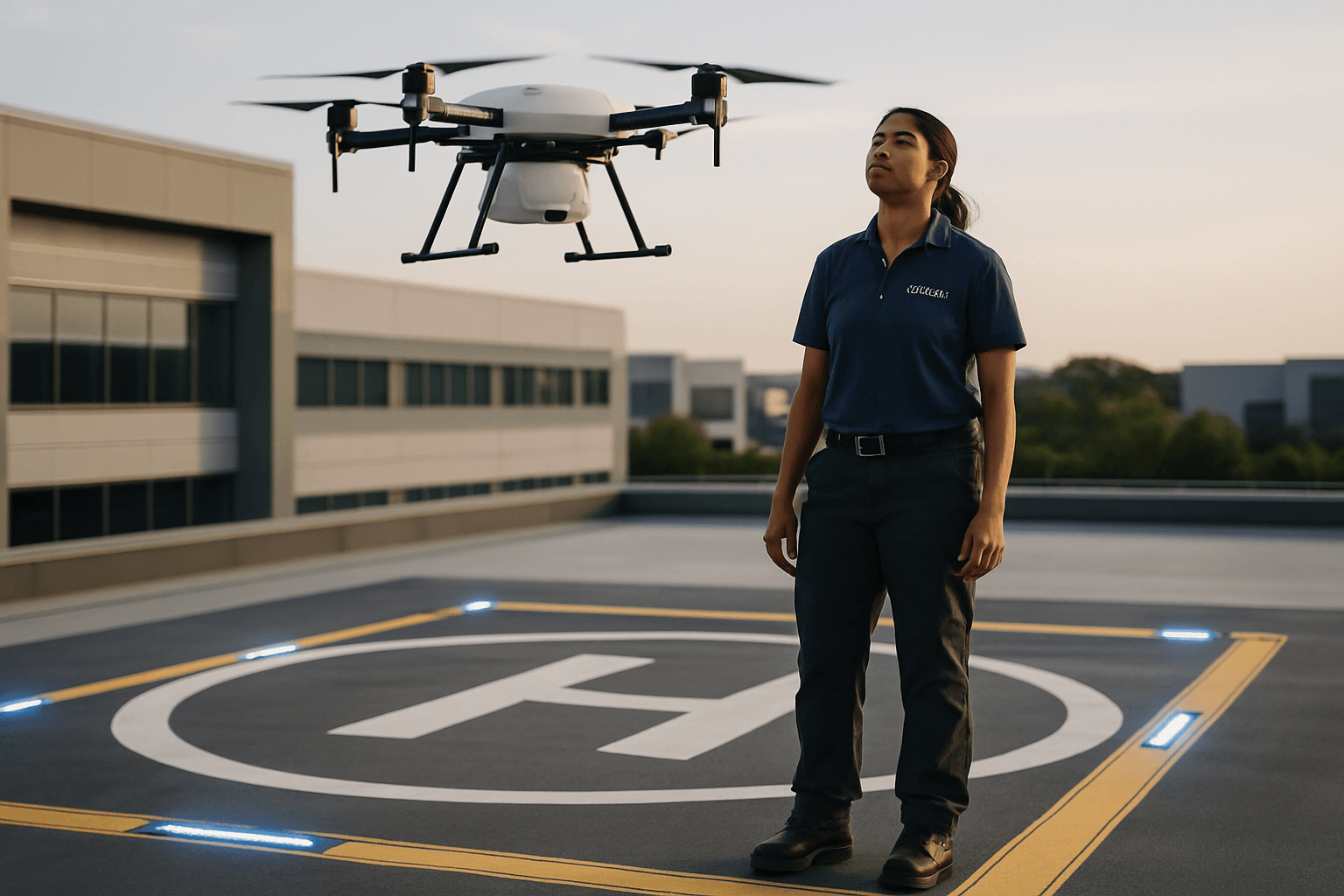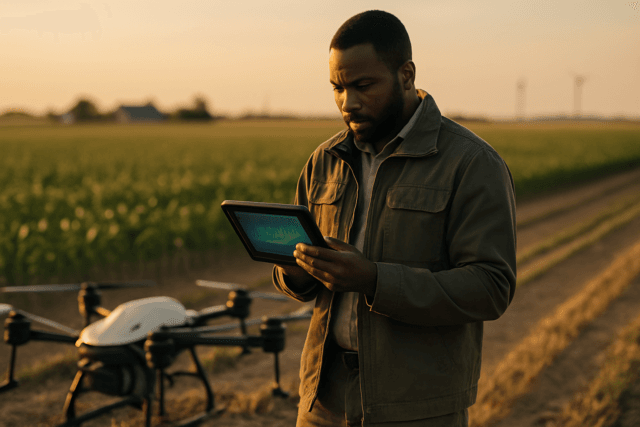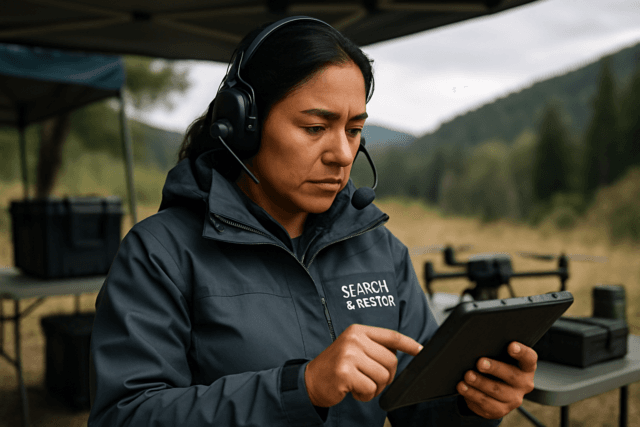The dream of packages arriving by air, swiftly delivered by autonomous drones, is rapidly transitioning from concept to reality. However, for drone delivery services to scale and operate efficiently, a crucial piece of the puzzle must be perfected: the landing zone. These dedicated areas are more than just a spot for a drone to touch down; they are sophisticated interfaces between air and ground operations, demanding a stringent set of technical requirements to ensure safety, reliability, and seamless integration into urban and suburban environments.
Fundamental Physical Requirements
The physical characteristics of a drone landing zone are paramount, directly influencing the safety and efficacy of each delivery.
Flat, Stable, and Clear Surface
A fundamental requirement for any drone landing zone is a flat, even, and stable surface. This is critical to prevent instability during takeoff and landing, which could otherwise lead to damage or inaccurate package placement. Such surfaces also protect the drone’s delicate components from dirt, sand, and moisture kicked up by rotor wash.
Size and Visibility
The dimensions of a landing zone must be appropriate for the size of the drones being used. While smaller drones might utilize compact pads, larger commercial delivery drones require more extensive and robust areas. For instance, landing pads range from 2 feet in diameter for mini drones (e.g., DJI Mini series) to 8 feet for heavy-lift models (e.g., Matrice 300/350). High-contrast visual targets, often featuring bright colors like orange with black heliport markings, are essential to improve visibility for both automated and human-supervised landings and aid in precise alignment.
Material and Durability
Landing pads should be constructed from durable, non-slip materials such as heavy-duty nylon or high-grade polymers. These materials must be robust enough to withstand repeated landings and takeoffs, protect rotors from debris, and prevent dirt from entering motor bearings. Many pads feature weighted perimeters or secure anchor points to ensure stability, particularly in windy conditions. Rustproof components are also important for longevity and ease of cleaning.
Environmental and Safety Considerations
Beyond the physical pad itself, the surrounding environment and inherent safety measures are critical for drone delivery success.
Obstacle Clearance
Landing zones must be situated in areas free from obstructions such as trees, buildings, power lines, and other structures. These obstacles can interfere with GPS signals, pose collision hazards during ascent and descent, and create unpredictable wind shear or turbulence. A clear, unobstructed flight path to and from the landing zone is non-negotiable.
GPS/GNSS Signal Integrity
A clear view of the sky is essential for optimal Global Positioning System (GPS) and Global Navigation Satellite System (GNSS) reception. Strong and consistent satellite signals are vital for the drone’s navigation, positioning accuracy, and safe operation. Operators should test signal strength in their selected zone before flight.
Weather Resilience
Drone delivery operations are inherently sensitive to weather conditions like strong winds, heavy rain, or snow. Therefore, landing zones must be designed to withstand and operate safely within a defined range of adverse weather. This might involve features that mitigate the impact of precipitation or wind, ensuring the drone can land safely and the package remains protected.
Public Safety and Security
To minimize risks, landing zones must be located safely away from crowded areas, people, and animals. Flying over populated areas can not only compromise privacy but also pose a significant safety risk. Furthermore, operators may need to establish secure perimeters and implement security policies to physically protect their facilities and operations, potentially including background checks for personnel.
Noise Management
As drone delivery becomes more common, noise pollution is a significant public concern. Drone delivery services may require a full noise assessment process to gain approval, particularly as they are likely to involve repeated flights over noise-sensitive areas. Planning authorities are increasingly considering potential noise impacts when evaluating drone infrastructure.
Regulatory and Operational Requirements
The technical specifications of landing zones are heavily influenced by a complex web of regulations and the broader operational ecosystem.
Airspace Authorization and Compliance
Drone landing zones must comply with local, state, and federal aviation regulations. This includes operating within specific altitude limits (typically below 400 feet above ground level, or 120 meters), avoiding restricted airspace, and obtaining necessary authorizations for flights in controlled airspace. The Federal Aviation Administration (FAA) is continuously developing frameworks, such as the proposed “Part 108” in the U.S., which would require FAA approval for operating areas, including specified boundaries and takeoff/landing locations.
Beyond Visual Line of Sight (BVLOS) Support
The scalability of drone delivery hinges on Beyond Visual Line of Sight (BVLOS) operations, meaning the drone can fly without being constantly seen by a pilot. This requires landing zones to be part of a system that includes reliable communication networks, advanced collision avoidance technology, and often, pre-designated, access-controlled locations.
Integration with Logistics and Traffic Management Systems
For efficient and large-scale drone delivery, landing zones need to be seamlessly integrated with existing logistics networks and Unmanned Traffic Management (UTM) systems. UTM systems provide airspace intelligence, manage drone traffic flow, and offer real-time meteorological and obstacle information for optimal path planning. This integration allows for centralized control and management of drone fleets.
Charging and Maintenance Facilities
Dedicated pads for loading, take-off, and landing often require co-located or nearby charging facilities. Automated charging systems are crucial for continuous operation, reducing downtime between deliveries. Depending on the scale, landing zones may also incorporate maintenance facilities to ensure drone fleet readiness.
Emergency Landing Procedures
Critical to safety is the identification and mapping of safe emergency landing zones along planned delivery routes. Advanced drone management systems can define these points, allowing a drone to autonomously land at the nearest safe location in case of a system malfunction, adverse weather, or other unforeseen emergencies.
The technical requirements for drone delivery landing zones are multifaceted, encompassing physical infrastructure, environmental considerations, and a robust regulatory and operational framework. As drone delivery services continue to evolve, these landing zones will serve as vital nodes in the next generation of logistics, demanding ongoing innovation and adherence to stringent safety standards.





